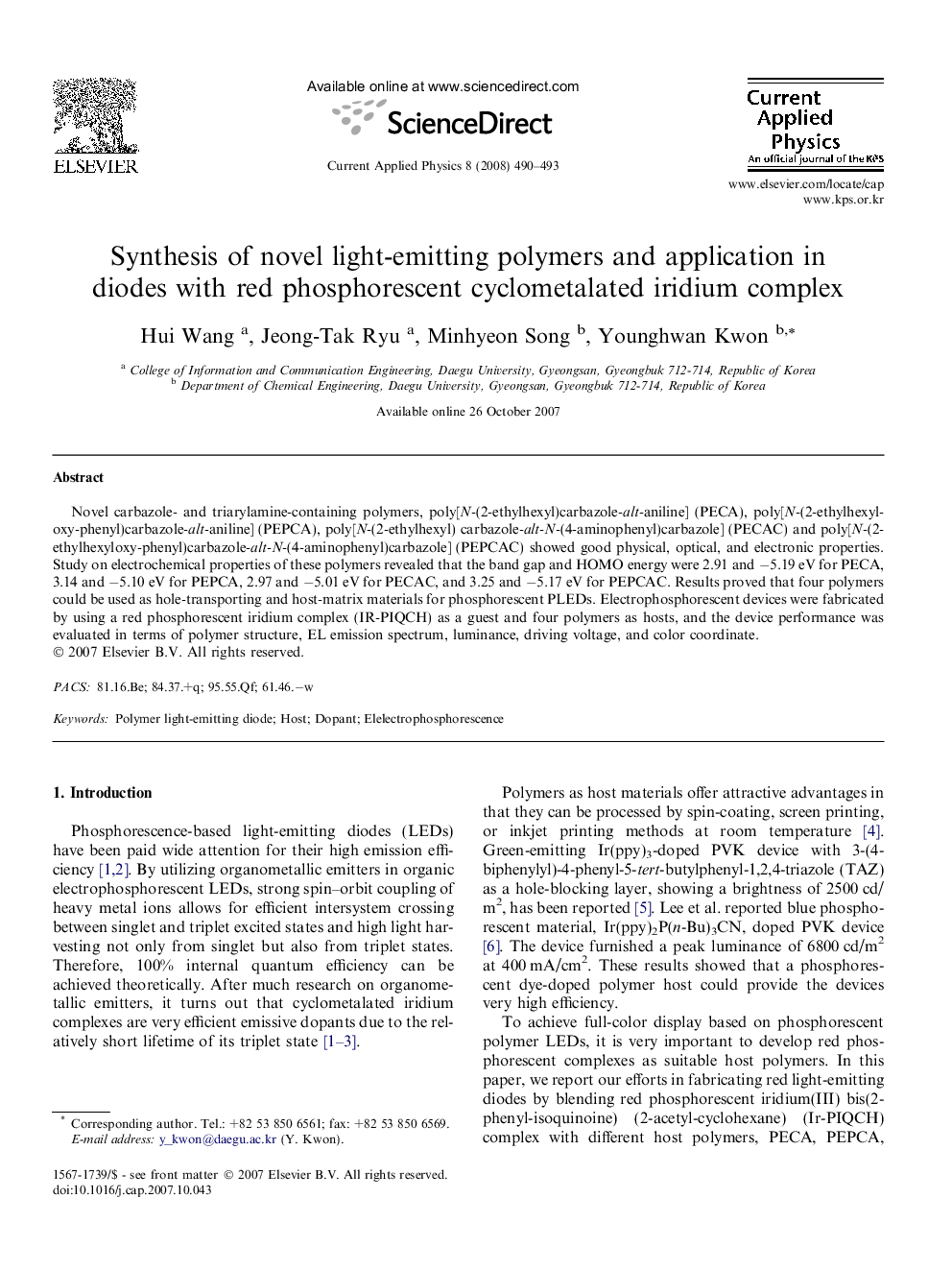| Article ID | Journal | Published Year | Pages | File Type |
|---|---|---|---|---|
| 1788526 | Current Applied Physics | 2008 | 4 Pages |
Novel carbazole- and triarylamine-containing polymers, poly[N-(2-ethylhexyl)carbazole-alt-aniline] (PECA), poly[N-(2-ethylhexyloxy-phenyl)carbazole-alt-aniline] (PEPCA), poly[N-(2-ethylhexyl) carbazole-alt-N-(4-aminophenyl)carbazole] (PECAC) and poly[N-(2-ethylhexyloxy-phenyl)carbazole-alt-N-(4-aminophenyl)carbazole] (PEPCAC) showed good physical, optical, and electronic properties. Study on electrochemical properties of these polymers revealed that the band gap and HOMO energy were 2.91 and −5.19 eV for PECA, 3.14 and −5.10 eV for PEPCA, 2.97 and −5.01 eV for PECAC, and 3.25 and −5.17 eV for PEPCAC. Results proved that four polymers could be used as hole-transporting and host-matrix materials for phosphorescent PLEDs. Electrophosphorescent devices were fabricated by using a red phosphorescent iridium complex (IR-PIQCH) as a guest and four polymers as hosts, and the device performance was evaluated in terms of polymer structure, EL emission spectrum, luminance, driving voltage, and color coordinate.
